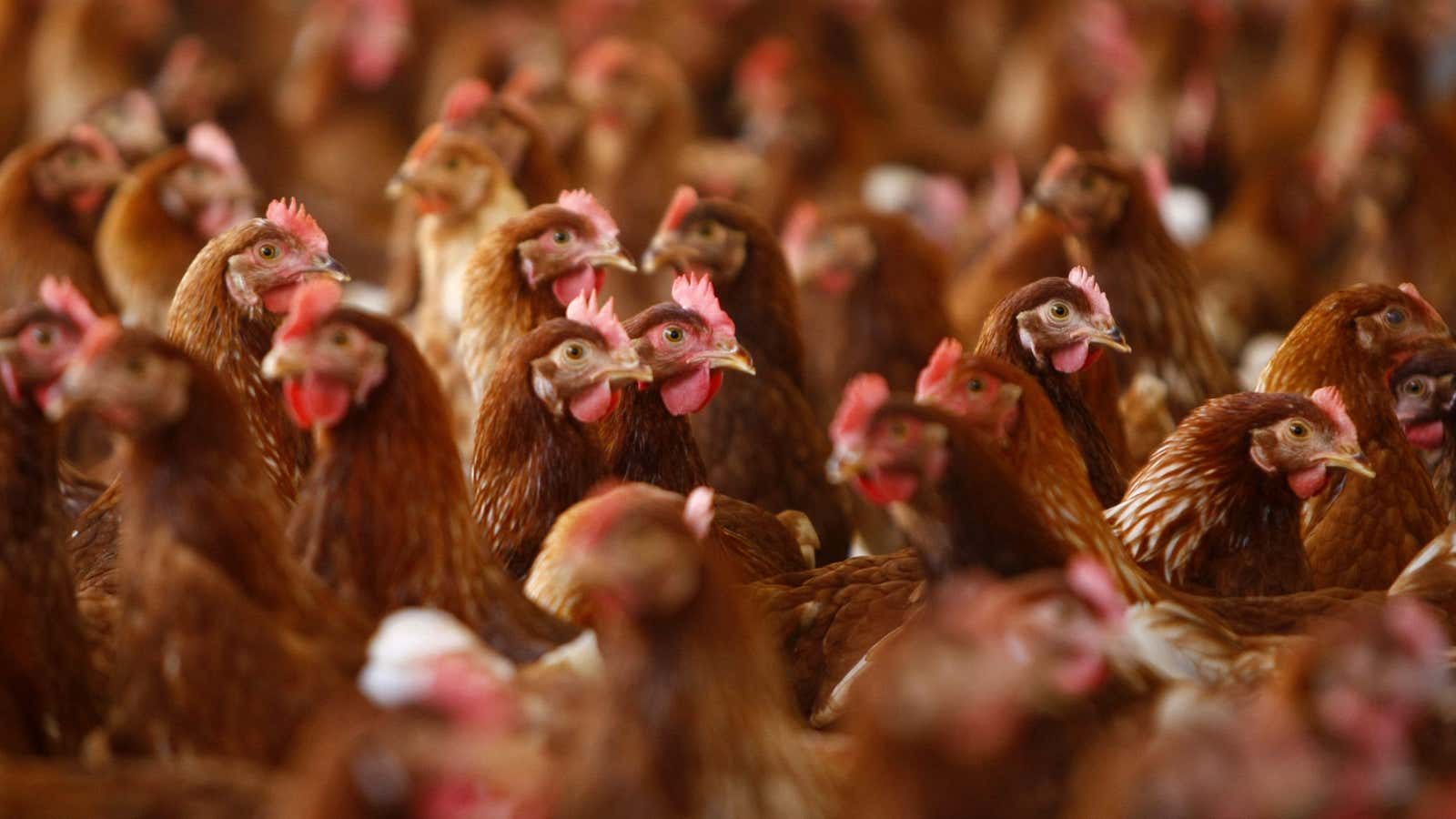Over 90% of the United States’ egg-producing hens are kept in battery cages for their entire laying lives. The reasons are many: Birds that are crammed into cages eat less feed, use less heat during winter, require less farm labor, and occupy less barn space. In other words, if you don’t mind torturing an animal, you can spend less time and make good money from their misery.
But, times are changing. Battery cages are now banned in the European Union and California, and effectively banned in Michigan and Ohio. Many large corporations like Unilever (which makes Hellman’s Mayonnaise, Ben & Jerry’s, etc.), Burger King, McDonald’s, and Wendy’s have put a timeline on moving to cage-free eggs, pledging their dedication to the human treatment of the animals where their food is sourced. By most accounts, going cage-free is slightly better from an animal welfare perspective. But, we can do better.
In reality, battery cage hens typically have less than 80 square inches in which to spend their adult lives. In a cage-free system, the birds are crammed onto a warehouse floor, where they typically have less than 115 square inches each, or a little more area than a piece of paper.
Pasture-raising allows birds to roam freely on rotated pasture during daylight hours. On a farm that is Certified Humane, these birds must have at least 108 square feet each available to them. That’s over 15,000 square inches per bird! But these birds don’t just roam–they forage, run, perch, dust bathe and generally behave like chickens should. And all the additional nutrition they get from nature’s salad bar makes for happy, healthy hens that produce eggs that look and taste very different, but it doesn’t end there. The health benefits of pasture-raised eggs are also significant. According to a 2003 study by Penn State University, one pasture-raised egg contains two times more omega-3, three times more vitamin D, four times more vitamin E and seven times more beta carotene–all nutrients that are vital to healthy human growth.
Critics claim that we don’t have the ability to raise laying hens outdoors, and that such a system couldn’t provide for the needs of an egg-hungry nation. That’s simply not true. There are around 350 million laying hens in the US. If we were to provide them each with 108 square feet of pasture, we’d need less than a million acres of what might be considered marginal land. Sounds like a lot, right? Wrong. There are over 400 million acres of farmland in the US, and that doesn’t include rangeland for grazing animals like cattle. Eggs amount to only 1% of our agricultural production dollars. We could provide all hens with an appropriate, outdoor lifestyle with just two tenths of 1% of the farmland we use today! Instead, we choose to keep most of these living beings crammed together in unhappy, unhealthy squalor.
The move from battery cages to cage-free is to be commended, but remains a small evolutionary step. All farm animals belong outdoors, and laying hens deserve to see the sky, breathe fresh air, exercise, play, and eat some salad.
For many Americans, eggs are the first sustenance we take into our bodies each day. These bundles of nutrition are produced unconditionally by beautiful, sentient creatures. We owe them more than a few ounces of grain and a harsh environment. We could show them a little love.
